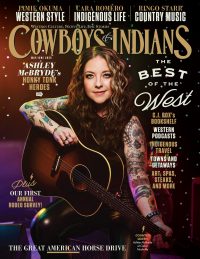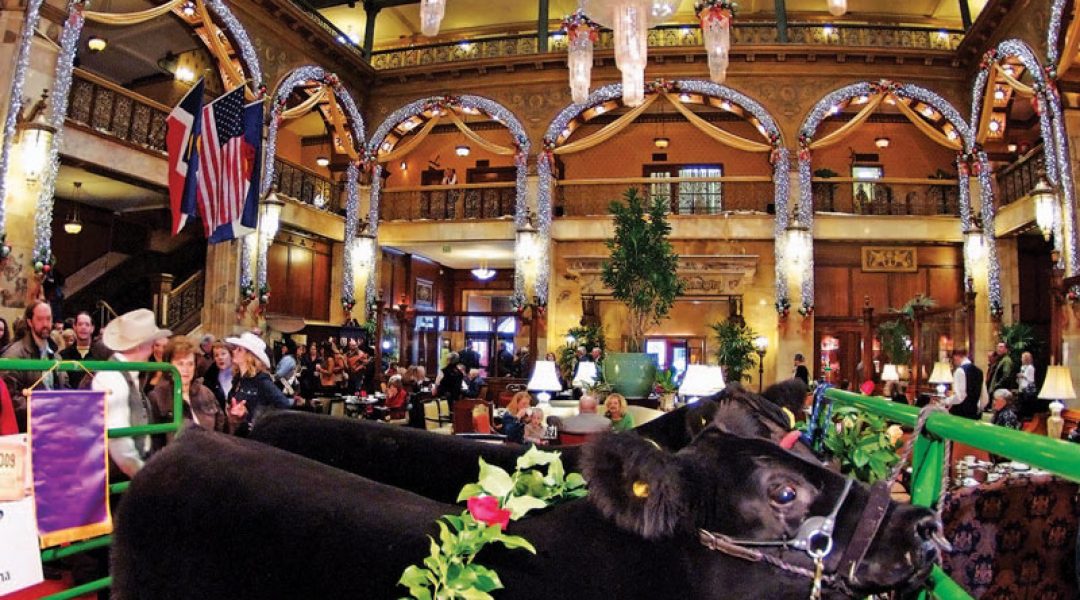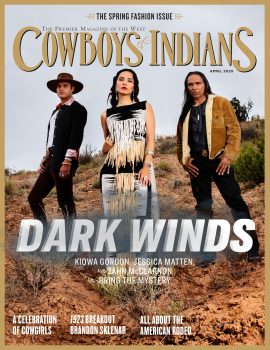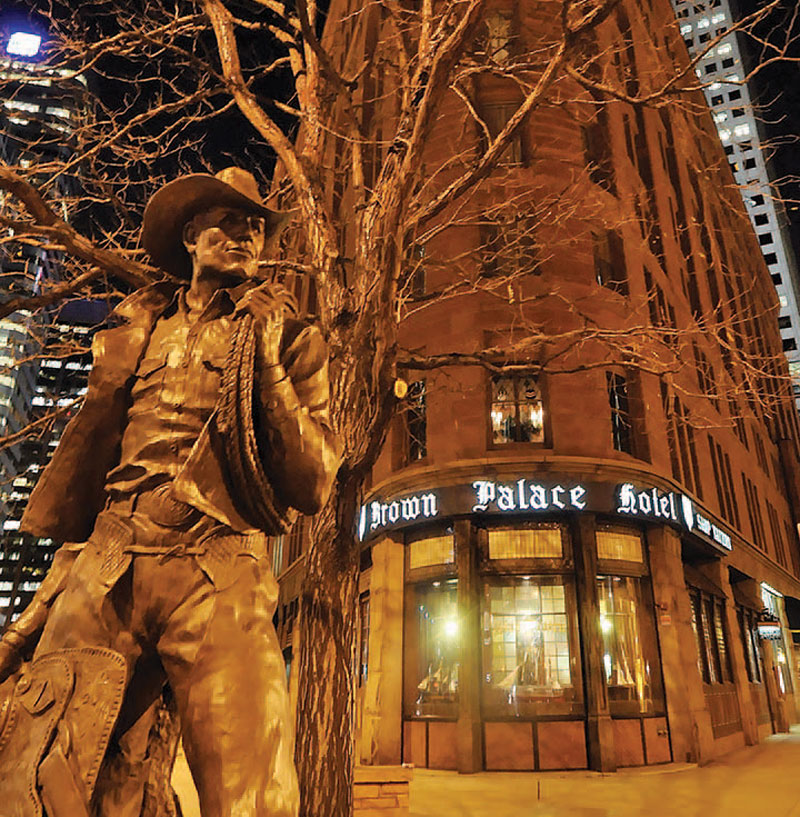
Where else but this hallowed historic hotel in Denver can you take afternoon tea with the National Western Stock Show champion steer?
Sipping a latte while soaking in the sights along the famous 16th Street Pedestrian Mall in Denver, I am struck by the mixture of Old West and progressive culture that weaves seamlessly throughout the Mile High City. On this street alone, a chic Western boutique opens its doors next to a historic downtown church, hip new restaurants compete with old cowboy bars, and the 1911 Daniels & Fisher clock tower tolls the hour.
From this bustling city center, I make my way to The Brown Palace Hotel and Spa. A valet in tailcoats ushers me into the eight-story atrium lobby, and suddenly the sounds of traffic, the hordes of business suits and tourists, the neon signs, and frantic energy of downtown are swept away by the slowly revolving door.
It opened to great fanfare in 1892 and more than a century later it’s apparent why dignitaries and celebrities have been coming ever since. Why every president beginning with Teddy Roosevelt, with the exception of Calvin Coolidge and Barack Obama, has visited. Why Geena Davis and Ethel Kennedy frequent the decadent spa. Why the Unsinkable Molly Brown related her harrowing story of surviving the sinking of the Titanic to the press in the grand ballroom. Why cattle barons and oil entrepreneurs continue to conduct the business of the West in this storied lobby amid its aura of elegance and stateliness.
The Brown Palace is not just a hotel. It is opulent Western hospitality. And it is Western history — and history in the making.
Personally, I am not one for tours. I get impatient, fidgety, and my feet start aching. But after catching a glimpse of the hotel’s historian (a petite, fiery woman dressed in a black floor-length period dress), I knew I was going to attend one of her complimentary tours held every Wednesday and Saturday at 3 p.m. Part actress, part educator, and all about the facts, Debra Faulkner had me leaning in, hanging on her every word as if I were catching the latest gossip.
I learned how visionary Henry C. Brown (no relation to the Unsinkable Molly) purchased 160 acres in the late 1800s for $200 and then, in an act of genius, donated 10 acres of his homestead for the state’s capitol building, thus ensuring that his land’s value would skyrocket. Once the city began expanding toward his property, Brown built a grand hotel to rival the palaces of Europe. He spared no expense, “lining the atrium lobby in Mexican white onyx and surrounding it with seven floors of balconies edged in cast-iron railings and ornate grillwork, topped with a stained-glass ceiling,” Faulkner told us. And I learned about the damage done by President Eisenhower’s indoor golf practice, the legend of an old resident who reportedly haunts room 206, and the triage center improvised in the lobby for fainting teenage girls eager to glimpse The Beatles when the Fab Four stayed at the hotel on their U.S. tour in 1964.
Something equally momentous is taking place during my visit. A red carpet runs through the lobby and a line of onlookers wraps around the atrium and out the front doors. Rodeo queens with flowing hair in sequined hats and embroidered chaps take pictures with members of the crowd. Groups of excited schoolchildren decked out in red felt cowboy hats sit expectantly on the grand staircase. Women in leather skirts, dripping turquoise, along with men in bolos and their best boots, lean over the atrium balconies. The place is packed, and everyone is waiting eagerly.
And then it happens: Three steers, black as coal, soft as Angora, big as real life, trot down the red carpet. These very special guests of honor are the winner and runners-up of the National Western Stock Show. And they’ve arrived for adulation — and afternoon tea.
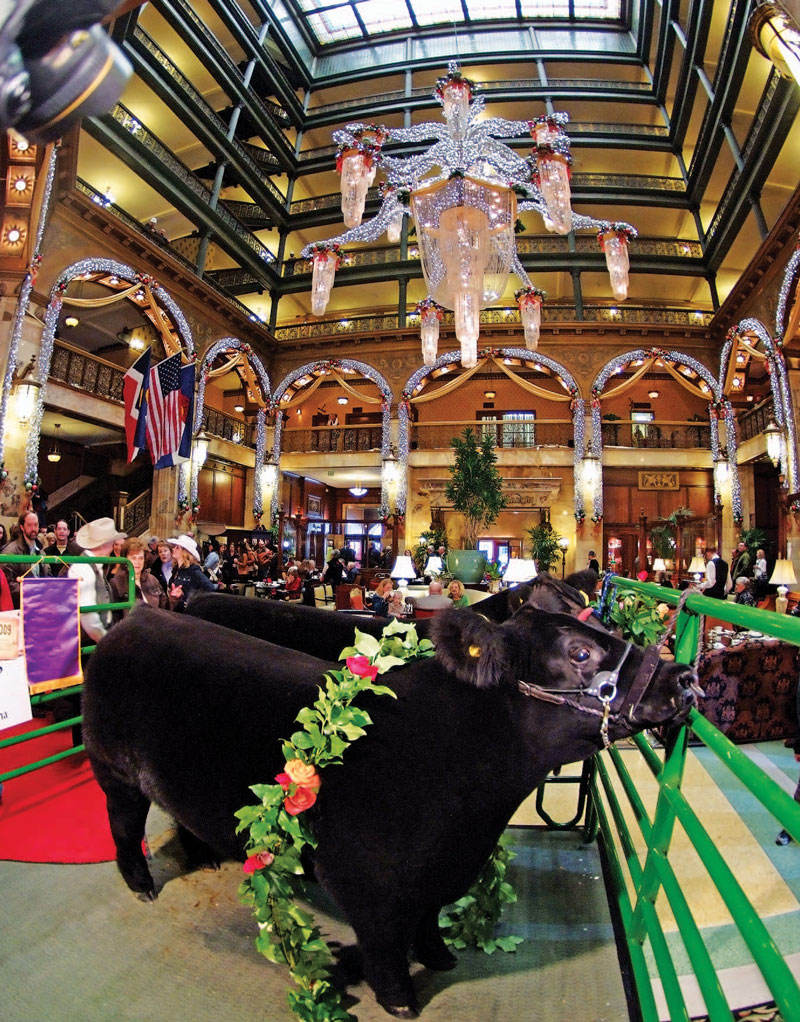
This climactic visit of the steers to The Brown Palace marks the end of the National Western Stock Show, an annual event that Denver has hosted since its inception in 1906. Dubbed the Super Bowl of stock shows, the 16-day extravaganza kicks off with a crew of cowboys and cowgirls driving hundreds of longhorns through the streets of downtown Denver and features rodeos and a multitude of events, including The Brown Palace afternoon tea, which began in 1945. That year, Daniel Thornton (a Gunnison County rancher who became Colorado’s governor in 1951) auctioned his Hereford championship steers, T.T. Regent and T.T. Regent II, for an unprecedented $50,000 each. It was such industry news that C.K. Boettcher (then owner of The Brown Palace) asked Thornton to exhibit the steers in the lobby for the media. A few years later, afternoon tea was added to the festivities.
The hotel likes to say it’s “as close as it gets to a bull in a china cabinet.” And it is close, indeed. As I sip my English breakfast and sample delicate cucumber sandwiches, folks in the crowd pet the impressive steers and pose with them for complimentary photographs.
Even if you can’t time your visit to coincide with the January stock show and afternoon tea with the grand champion steer, the hotel is a gem at any time of the year. “It’s almost flawless,” says historian Faulkner with a laugh. Almost? “Two of the iron gratings in the atrium were installed upside down. Our best theory is in line with various artistic traditions throughout the world, like those applied to quilting or Navajo weaving where the artisans consider it sacrilegious to try to create something faultless, so they add an intentional flaw. But why we need two ... perhaps because The Brown is so close to perfect!”
For more information on The Brown Palace or to make reservations, visit the hotel's website.
From the January 2014 issue.



